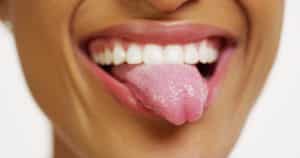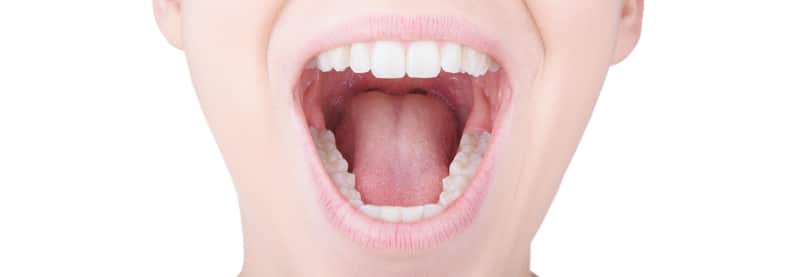Your Mouth and Teeth Anatomy


Your mouth has many parts that are all important for staying healthy. You want strong teeth to help you chew and eat, and you need healthy tissue to keep the teeth in place. Certain good and bad oral health habits can lead to your teeth and mouth anatomy changing over time. Find out the different parts of your mouth and teeth anatomy!
Your Mouth Anatomy
Your mouth is one of the most important parts of your body. Consider how much you use your mouth every day. Every particle of food you eat, everything you drink, and the words you say all come from your mouth. Besides your nose, this is also a passageway for oxygen to get into your body to nourish the tissues that need it.
Your oral cavity is more than just your cheeks, gums, tongue and teeth. There are many parts that make up the mouth and every part has a function and purpose. Your mouth has 2 main regions known as the “vestibule” and the “oral cavity proper”. Defined, the vestibule is everything inside the mouth that is between the teeth, cheeks and lips. The rest of your mouth tissues are part of the oral cavity proper.

Various Tissues and Their Purpose
You have many parts of your mouth that all have a location and purpose:
- Teeth: These provide structure to the face and mouth, and they help the digestion process by crushing up the food you eat. Having teeth makes a big difference in speech development.
- Tongue: Aids in the digestion process, as various cells in the tongue secrete saliva, which breaks down your food. Tastebuds allow you to understand how food feels and the flavor it has. It’s essential for swallowing food and for speaking. Half of your tongue muscles are anchored to bone. That bone keeps the tongue in place.
- Gums: These are soft tissues that hold the teeth firmly in your jaws. Gums around the teeth are stuck firmly to the teeth and jaw surfaces, sealing out food, preventing tooth loss and helping with friction caused by eating. These soft tissues also protect the bones and delicate nerves in the mouth from exposure.
- Uvula: This is the tissue that hangs down in the back of your throat. Glands in the uvula produce a lot of saliva. The uvula muscle itself helps close off the nasal cavity when eating and drinking, as it can move like any other muscle.
- Hard palate: This is the roof of your mouth that is hard and contains bone. That bone separates your mouth cavity from your nasal cavity.
- Soft palate: Your soft palate is the part of your mouth where the hard palate ends and the roof of your mouth becomes soft. It does not contain bone. However, it is a muscle that helps with swallowing and breathing. The soft palate is what makes some mucus come into your mouth when you sneeze so that your nasal passage doesn’t take the entire force of your sneeze.
- Jawbone: This is the strongest bone in the face. It structures your mouth and head and holds all the teeth and mouth tissues in place. Without a working jaw, your entire mouth would suffer major health problems.
Numbering Your Teeth
Every single tissue and part of your mouth is important, even if it’s a tiny tissue. If you didn’t have one of these main areas, your eating, digestion and speech would be significantly hindered. One of the most important parts of your mouth that you should care for is your teeth. This part of your mouth is different from the rest because the teeth are not living tissue. Almost everywhere in your body you have living tissue—even your bones! The bones are actually fairly hollow and sponge-like, full of cartilage, nerves, blood vessels and more.
However, the teeth are 96% mineral and are the hardest substances in your body. You have layers of solid tooth enamel that allows you to bite down with hundreds of pounds of pressure. That’s how you can eat very hard nuts or other pieces of food without breaking your teeth. Your teeth are composed of a thick, outer mineral enamel, with a softer layer inside called the dentin. At the very center is a soft tissue pulp where blood vessels and nerves nourish the tooth.
A healthy adult mouth has 28 teeth, or 32 if the wisdom teeth have not been removed. You should have 14 teeth on top and 14 on bottom total. If you look at your teeth, you will notice that there are different shapes to the teeth. Those different shapes help you bite, chew, rip and eat your food.

Notice and Prevent Problems
No matter how hard your teeth are, they can decay quite rapidly if you don’t take care of them. When you eat, you have residue that is left behind with digestion. That residue is plaque, and it is a mixture of sugars in the food you eat combined with mouth bacteria. That residue sticks to your teeth, decaying the hard, mineral enamel and it makes your gums recede. If you don’t brush and floss your teeth every day, several times a day, you will notice color changes and decay in your teeth. Your gums will begin to pull away from the teeth, and you may actually experience tooth loss as well as severe gum problems.
Notice when these things happen and see a dentist often to spot signs of decay or disease early on. Your mouth functions really well if you keep your tissues and teeth clean so they can do what they were designed for. If you want to learn more about your mouth or want to see if your mouth is healthy, call Dr. Ania’s office at 303-443-0998 for your comprehensive examination and cleaning!


